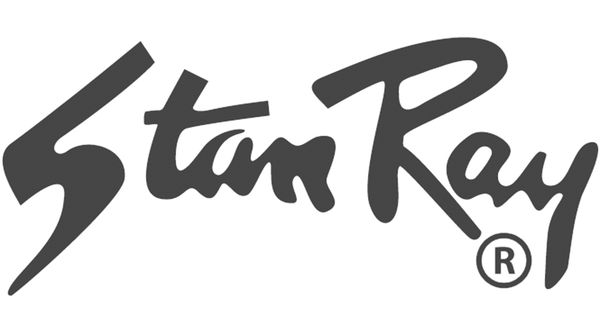Simplicity in design often isn’t that simple to achieve. Distilling something down to its most basic form takes great skill - and whilst a lot of things are often sold on their long list of supposedly life-changing features, the classics that truly stand the test of time are often masterpieces of minimalism, stripped of all superfluous detail.
Fatigue pants are a prime example of this. A hearty bit of olive green sateen cotton, four patch pockets and a few belt loops… a perfect recipe that doesn’t need to be messed with. We’ve been making them since the 1970s, and although the world might have changed a bit since then, our fatigues haven’t. Here’s the story behind them…

Elliott Gould (Trapper John) wearing OG-107s with Hawaiian Shirt in M.A.S.H. (1970), as does soldier (centre).
Originally designed as part of the US military’s OG-107 uniform (the OG stood for olive green) back in 1952, fatigue pants (as they’ve come to be known) evolved out of the ‘HT’ herringbone twill pants worn during WW2. Whilst some military gear is created with a very specific job in mind, with intricate details added to help with a distinct task, fatigue pants were intended to be worn across the board, for a wide range of daily duties - from fixing trucks to digging ditches.

Off-duty soldiers in Vietnam. Image via Form Follows Function.
Made from durable sateen cotton (a densely woven fabric with a smooth finish), they featured a super-stripped-back design, with two flap pockets on the back and those trademark rectangular patch pockets on the front. Nothing else was needed. Uncomplicated and universal, these straight-up, no-nonsense trousers were soon worn for far more than odd jobs around the barracks, and would often be used in combat. The light and breezy fabric added to their appeal too - making them ideal for the damp, tropical climates faced during the US Army’s time in Korea and Vietnam.

Back pocket details: twin pockets with button-fastening flaps and woven label.

No nonsense design: trademark rectangular patch pockets on the front.
Meanwhile, back in the States, the strong military significance of the fatigue pants wasn’t lost on the growing number of anti-war protestors who were marching the streets in opposition of America’s involvement in the Vietnam War. Protestors, including members of the Vietnam Veterans Against the War, fully flipped the connotations of the trousers, wearing them alongside M-65 jackets (another classic design which saw heavy use in Vietnam) as a powerful symbol of peace.

A young John Kerry (right) wearing Fatigues with moccasins at a Veterans Against The War march, 1971. Photo: Associated Press.
Rock climbers wore ‘em too, and the new generation of laid-back, long-haired hikers (such as California’s infamous Stonemasters) would often wear fatigues or white painter pants along with plaid shirts and headbands to set themselves apart from the stricter generation of slower, more equipment-based, climbers which came before them.

Various climbers opted for hard-wearing Fatigues during the 70s.
Easily attainable, thanks to the countless army surplus shops which had cropped up after WW2, and easily repairable, due to their unfussy design, fatigues were also utilised by those wanting to separate themselves from the trappings of consumer society, making them a favourite with all manner of subcultures, from San Fran hippies to London punks. By the late 70s, that trademark sateen cotton was replaced by a poly/cotton blend, and in 1981, the trousers were finally phased out by the US military in favour of the more pocket-heavy BDU pants, but fatigues still filled the shelves of surplus shops, ripe for re-appropriation.

Reappropriated: OG-107s during the Dominican Republic Civil War (left,1965) a Jamaica 'Rocker' (centre, 1977), London Punks (right, 1978).
The late great John Belushi wore his with a black M-65 and a tucked-in madras shirt during a 1981 photoshoot with Annie Leibovitz, whilst in Japan (where fatigues are known as baker pants) teenagers raised on a diet of American TV, music magazines and skateboard videos combined them with Oxford shirts and canvas pumps to create a highly-revised version of the American casual wardrobe.

John Belushi, Staten island, 1981 (Annie Leibovitz).
Like the OG-107 shirts they were originally designed to be worn with, these unassuming trousers, designed with function firmly in mind, unintentionally outgrew their original purpose - becoming counter-culture classics in the process.
At Stan Ray, we make three versions of the OG-107 Fatigues. The OG Loose Fatigues (or 1100s, as they’re sometimes known) are our classic fatigues which we’ve been making in our factory in Crockett, Texas since the 70s. These have the same loose, relaxed fit as the original fatigues of the 50s, with straight legs and a high rise.

OG (original) Loose fit.
The Tapered Fatigues (or 1200s) were created in the 80s for the Japanese market, and feature a slightly lower waist than the Loose Fatigues, and slightly tapered legs which narrow down to a 16" opening.

Taper fit.
Finally, there’s the Slim Fatigues - AKA the 1300s. These are a modern reworking of the original design, with a lower waist which sits on, or just above, than the hip, and a slimmer fit - with tapered legs that narrow to a 15” opening.

Slim fit.
They’re all made the same way, with the same classic key ingredients - olive green sateen cotton, four patch pockets and a few belt loops. Even today, nearly 70 years after OG-107 fatigue pants were first created, when it comes to hard-wearing, no-nonsense trousers, the question remains… what more could you want?


